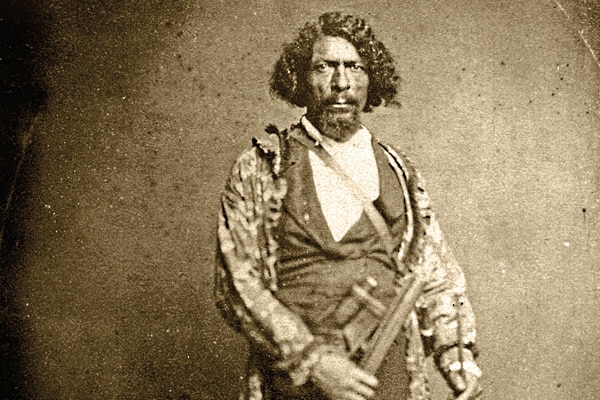
James P. Beckwourth was a Larger-than-Life African American mountain man, fur trapper, and explorer. His travels took him across the entirety of the western U.S. and earned him a name as one of the most influential frontiersmen of his time. Beckwourth is credited with the discovery of Beckwourth Pass, the improvement of Beckwourth trail, and as one of the best “yarn spinners” of all time.
James Beckwourth, also known by names Beckwith, and Jim Beckwourth, was born into slavery in 1798, in Fredericksburg, Virginia. His father being a white man, took him along when he moved to Louisiana, and eventually St. Louis. There, he was freed, and took the opportunity to join General William H. Ashley’s fur trade expedition as a horse handler, blacksmith, and trapper. His position as a fur trapper led him on many expeditions throughout the west, including visits to Utah and Colorado. Speculation states that he may have had a heavy hand in the exploration of the Bear, Green, and Colorado rivers of Utah, and by 1825 he was actively trapping across the Salt Lake and Cache Valleys. He soon gained a reputation as an “Indian Fighter”, and was known for his participation in raids, battles, and extermination of various Native American tribes, primarily the Blackfeet. This violent relation to the Blackfeet made him a valued warrior among the Blackfeet’s nemesis, the Crow. In 1828, Jim was “kidnapped” by the Crow, and after earning their respect was married to several of the tribe’s women, and according to his own autobiography, earned the title of “chief.”
After leaving the Crow in 1837, Jim participated in several military efforts. He played a role as a guide and messenger in Florida’s Seminole War. After the war, Beckwourth again traveled through the west, this time primarily through New Mexico and Colorado. He spent time operating various saloons throughout New Mexico, and became a popular guide for Gold Rushers heading to California. He was prized for his vast knowledge of the mountains, survival skills, and avoidance of Native American territory. It was during this period of time that he discovered Beckwourth Pass, a low elevation path through the Sierra Nevada’s. While in California, Beckwourth was befriended by journalist Thomas D. Bonner, who recorded Jim’s life story as he dictated. This autobiography was the first record of an American Mountain Man, and was chock full of all the adventurous tall-tales that are so loved even today by America.
By the 1850’s Beckwourth had settled in Denver, Colorado and was working as a shopkeeper, and occasionally a guide. It was here that he was recruited for his part in the Sand Creek Massacre, against the Arapaho and Cheyenne peoples. After his unmerciful participation in the massacre, Beckwourth was no longer welcomed by the indigenous people of the area, and thus his value as a guide was lost. By 1860, Jim had returned to the Crow, where he lived until his death in 1866, at the age of 68.
Many historians have written off Beckwourth’s life account as fictitious folklore, due to his reputation as a “Gaudy liar” and “yarn spinner”, however, story telling was a very valued skill in the community of mountain men, and oral history is a deeply ingrained part of Native American culture. Many of his tales can be corroborated by historical evidence, and those that cannot will be left to the imagination of generations to come.